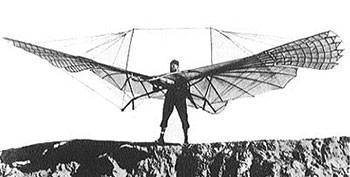- Why Should I Trust You?: Explaining the Predictions of Any Classifier (PDF) — LIME, a novel explanation technique that explains the predictions of any classifier in an interpretable and faithful manner, by learning an interpretable model locally around the prediction. Torkington’s Second Law: there’s no problem with machine learning that more machine learning can’t fix.
- How Etsy Formats Currency — I’m saving this one because it chafes every time I do it, and I do it wrong every time.
- Magic Leap in Wired — massive story by Kevin Kelly on the glories of Magic Leap, which The Verge noted still left a lot of open questions, such as “what the hell IS Magic Leap’s technology” and “why does everyone who works for Magic Leap sound like they’re on acid when they talk about the technology?” Everyone who wants their pixel-free glorious VR to be true is crossing fingers hoping it’s not another Theranos. The bit that stuck from the Wired piece was People remember VR experiences not as a memory of something they saw but as something that happened to them.
- Curing Our Slack Addiction — an interesting counterpoint to the “in the future everyone will be on 15,000 Slacks” Slack-maximalist view. For AgileBits, it distracted, facilitated, and rewarded distracting behaviour, ultimately becoming a drain rather than an accelerant.
"augmented reality" entries


Four short links: 20 April 2016
Explaining Classifier Predictions, Formatting Currency, Questioning Magic Leap, and Curing Slack Addiction


Four short links: 12 April 2016
Driverless Car Governance, Robots Conference, AR/VR Business Models, and Google SRE Book
- Robust and Transparent Governance is Key to Building Trust in Driverless Cars (Robohub) — I was just talking through this with my cousin. Who makes decisions and how accountable are they for them?
- We Robot Conference Roundup — videos of talks on How to Engage the Public on the Ethics and Governance of Lethal Autonomous Weapons and other subjects. (You had my attention at “lethal autonomous weapons.”)
- The Reality of AR/VR Business Models (TechCrunch) — list of potential revenue streams and superficial analysis of what they might look like in practice: hardware, e-commerce, advertising, mobile data/voice, in-app purchases, subscriptions, enterprise/b2b, and premium apps.
- Notes on Google’s SRE Book — said book published by O’Reilly, I’m chuffed to say. SRE = Site Reliability Engineer = the DevOps magicians who make uptime at scale possible.


Four short links: 28 March 2016
Holoportation, Filter Your Bot, Curriculum for the Future, and Randomized Control Trials for Policy
- Holoportation (YouTube) — video of teleconferencing with the Hololens. I hope my avatar wears more pants than I do.
- Wordfilter — package to filter out slurs and the kinds of things you don’t want your bot saying on Twitter. (via How Not to Make a Racist Bot)
- Curriculum For the Future (iTunes) — in game form, you get to figure out how to sell your preferred curriculum (“maker!”) to the parents and politicians who care about different things. Similar game mechanic to Win the White House from Sandra Day O’Connor’s iCivics.
- Test, Learn, Adapt: Developing Public Policy with Randomized Controlled Trials (PDF) — 2012 paper from the UK Cabinet Office talking about running real randomized control trials of policy. (I’d like to be part of one that looks at better health care!)

Designing beyond screens to augment the full human sensorium
A new reality is coming that will forever change the way we engage with our surroundings.
Register now for Solid Amsterdam, our conference exploring the intersections of manufacturing, design, hardware, software, and business strategy. The event will take place in Amsterdam on October 28, 2015.
 Virtual Reality (VR) strives to recreate the physical world in a virtual one. Augmented Reality (AR), on the other hand, can bring the digital into the physical world to create a hybrid reality. AR offers new ways of applying technology to immerse ourselves in our physical reality (rather than being removed from it), and even enhance it.
Virtual Reality (VR) strives to recreate the physical world in a virtual one. Augmented Reality (AR), on the other hand, can bring the digital into the physical world to create a hybrid reality. AR offers new ways of applying technology to immerse ourselves in our physical reality (rather than being removed from it), and even enhance it.
Interacting with screens is a big part of our everyday modern reality. We spend a great amount of time engaging with our world and each other through two-dimensional screens, whether via a smartphone, tablet, or computer. The world we live in, however, is three-dimensional and not flat: it is physical and involves the use of multiple senses. AR presents the opportunity to design beyond the screens we use today and create new experiences that better embody the full human sensorium.
In my last Radar article, I looked at how AR, wearable tech, and the Internet of Things (IoT) are augmenting the human experience. I highlighted how computer vision and new types of sensors are being combined to change the way we interact with and understand our surroundings. Here, I’ll look at how this can be extended by integrating the human senses beyond the visual — such as touch, taste, and smell — to further augment our reality. Read more…

Understanding neural function and virtual reality
The O'Reilly Data Show Podcast: Poppy Crum explains that what matters is efficiency in identifying and emphasizing relevant data.
Like many data scientists, I’m excited about advances in large-scale machine learning, particularly recent success stories in computer vision and speech recognition. But I’m also cognizant of the fact that press coverage tends to inflate what current systems can do, and their similarities to how the brain works.
During the latest episode of the O’Reilly Data Show Podcast, I had a chance to speak with Poppy Crum, a neuroscientist who gave a well-received keynote at Strata + Hadoop World in San Jose. She leads a research group at Dolby Labs and teaches a popular course at Stanford on Neuroplasticity in Musical Gaming. I wanted to get her take on AI and virtual reality systems, and hear about her experience building a team of researchers from diverse disciplines.
Understanding neural function
While it can sometimes be nice to mimic nature, in the case of the brain, machine learning researchers recognize that understanding and identifying the essential neural processes is much more critical. A related example cited by machine learning researchers is flight: wing flapping and feathers aren’t critical, but an understanding of physics and aerodynamics is essential.
Crum and other neuroscience researchers express the same sentiment. She points out that a more meaningful goal should be to “extract and integrate relevant neural processing strategies when applicable, but also identify where there may be opportunities to be more efficient.”
The goal in technology shouldn’t be to build algorithms that mimic neural function. Rather, it’s to understand neural function. … The brain is basically, in many cases, a Rube Goldberg machine. We’ve got this limited set of evolutionary building blocks that we are able to use to get to a sort of very complex end state. We need to be able to extract when that’s relevant and integrate relevant neural processing strategies when it’s applicable. We also want to be able to identify that there are opportunities to be more efficient and more relevant. I think of it as table manners. You have to know all the rules before you can break them. That’s the big difference between being really cool or being a complete heathen. The same thing kind of exists in this area. How we get to the end state, we may be able to compromise, but we absolutely need to be thinking about what matters in neural function for perception. From my world, where we can’t compromise is on the output. I really feel like we need a lot more work in this area. Read more…

Augmenting the human experience: AR, wearable tech, and the IoT
As augmented reality technologies emerge, we must place the focus on serving human needs.
Register now for Solid Amsterdam, October 28, 2015 — space is limited.
Augmented reality (AR), wearable technology, and the Internet of Things (IoT) are all really about human augmentation. They are coming together to create a new reality that will forever change the way we experience the world. As these technologies emerge, we must place the focus on serving human needs.The Internet of Things and Humans
Tim O’Reilly suggested the word “Humans” be appended to the term IoT. “This is a powerful way to think about the Internet of Things because it focuses the mind on the human experience of it, not just the things themselves,” wrote O’Reilly. “My point is that when you think about the Internet of Things, you should be thinking about the complex system of interaction between humans and things, and asking yourself how sensors, cloud intelligence, and actuators (which may be other humans for now) make it possible to do things differently.”
I share O’Reilly’s vision for the IoTH and propose we extend this perspective and apply it to the new AR that is emerging: let’s take the focus away from the technology and instead emphasize the human experience.
The definition of AR we have come to understand is a digital layer of information (including images, text, video, and 3D animations) viewed on top of the physical world through a smartphone, tablet, or eyewear. This definition of AR is expanding to include things like wearable technology, sensors, and artificial intelligence (AI) to interpret your surroundings and deliver a contextual experience that is meaningful and unique to you. It’s about a new sensory awareness, deeper intelligence, and heightened interaction with our world and each other. Read more…


Four short links: 9 June 2015
Parallelising Without Coordination, AR/VR IxD, Medical Insecurity, and Online Privacy Lies
- The Declarative Imperative (Morning Paper) — on Dataflow. …a large class of recursive programs – all of basic Datalog – can be parallelized without any need for coordination. As a side note, this insight appears to have eluded the MapReduce community, where join is necessarily a blocking operator.
- Consensual Reality (Alistair Croll) — Among other things we discussed what Inbar calls his three rules for augmented reality design: 1. The content you see has to emerge from the real world and relate to it. 2. Should not distract you from the real world; must add to it. 3. Don’t use it when you don’t need it. If a film is better on the TV watch the TV.
- X-Rays Behaving Badly — According to the report, medical devices – in particular so-called picture archive and communications systems (PACS) radiologic imaging systems – are all but invisible to security monitoring systems and provide a ready platform for malware infections to lurk on hospital networks, and for malicious actors to launch attacks on other, high value IT assets. Among the revelations contained in the report: A malware infection at a TrapX customer site spread from a unmonitored PACS system to a key nurse’s workstation. The result: confidential hospital data was secreted off the network to a server hosted in Guiyang, China. Communications went out encrypted using port 443 (SSL) and were not detected by existing cyber defense software, so TrapX said it is unsure how many records may have been stolen.
- The Online Privacy Lie is Unraveling (TechCrunch) — The report authors’ argue it’s this sense of resignation that is resulting in data tradeoffs taking place — rather than consumers performing careful cost-benefit analysis to weigh up the pros and cons of giving up their data (as marketers try to claim). They also found that where consumers were most informed about marketing practices they were also more likely to be resigned to not being able to do anything to prevent their data being harvested. Something that didn’t make me regret clicking on a TechCrunch link.

Consensual reality
The data model of augmented reality is likely to be a series of layers, some of which we consent to share with others.
A couple of days ago, I had a walking meeting with Frederic Guarino to discuss virtual and augmented reality, and how it might change the entertainment industry.
At one point, we started discussing interfaces — would people bring their own headsets to a public performance? Would retinal projection or heads-up displays win?
One of the things we discussed was projections and holograms. Lighting the physical world with projected content is the easiest way to create an interactive, augmented experience: there’s no gear to wear, for starters. But will it work?
This stuff has been on my mind a lot lately. I’m headed to Augmented World Expo this week, and had a chance to interview Ori Inbar, the founder of the event, in preparation.
Among other things we discussed what Inbar calls his three rules for augmented reality design:
- The content you see has to emerge from the real world and relate to it.
- Should not distract you from the real world; must add to it.
- Don’t use it when you don’t need it. If a film is better on the TV watch the TV.
To understand the potential of augmented reality more fully, we need to look at the notion of consensual realities. Read more…

The state of augmented reality
A look at AR today and how we need to design it for tomorrow.
Attend O’Reilly’s Solid Conference, June 23–25, in San Francisco. Solid is our conference exploring how the collision of software and hardware is fueling the creation of a software-enhanced, networked physical world. Helen Papagiannis will speak at Solid on June 24.
Unlike virtual reality (VR), augmented reality (AR) provides a gateway to a new dimension without the need to leave our physical world behind. We still see the real world around us in AR, whereas in VR, the real world is completely blocked out and replaced by a new world that immerses the user in a computer generated environment.AR today
The most common definition of AR to date is a digital overlay on top of the real world, consisting of computer graphics, text, video, and audio, which is interactive in real time. This is experienced through a smartphone, tablet, computer, or AR eyewear equipped with software and a camera. Examples of AR today include the translation of signs or menus into the language of your choice, pointing at and identifying stars and planets in the night sky, and delving deeper into a museum exhibit with an interactive AR guide. AR presents the opportunity to better understand and experience our world in unprecedented ways.
AR is rapidly gaining momentum (and extreme amounts of funding) with great advances and opportunities in science, design, and business. It is not often that a whole new communications medium is introduced to the world. AR will have a profound effect on the way we live, work, and play. Now is the time to imagine, design, and build our virtual future. Read more…


Four short links: 20 March 2015
USA Hire, AR Game, CS Cheatsheet, and 3D Printing Cured Resin
- David Recordon Joins US Govt — This afternoon, President Barack Obama will announce a newly created position for David Recordon, who has worked as one of Facebook’s engineering directors since 2009. Recordon will join the White House as the director of information technology. Obama building an A team from Foo Campers.
- MagicLeap/Weta Workshop FPS in AR (YouTube) — fun!
- Theoretical Computer Science Cheat Sheet (PDF) — how to appear smart.
- Carbon3D — Traditional 3D printing requires a number of mechanical steps, repeated over and over again in a layer-by-layer approach. CLIP is a chemical process that carefully balances light and oxygen to eliminate the mechanical steps and the layers. It works by projecting light through an oxygen-permeable window into a reservoir of UV curable resin. The build platform lifts continuously as the object is grown.



